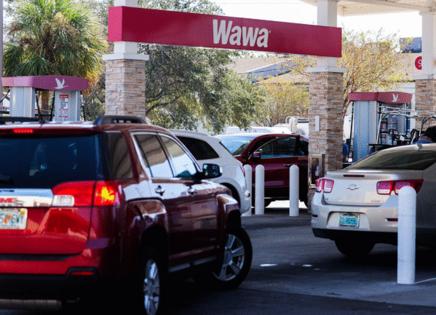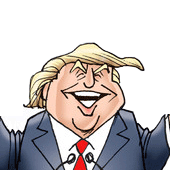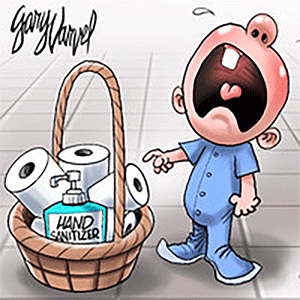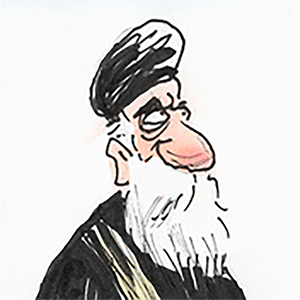Florida car insurance premiums could skyrocket due to Trump's tariffs
Published in Automotive News
Florida car owners already pay some of the highest insurance premiums in the nation. Last year’s storms threatened to push prices even higher.
Now experts are warning that President Donald Trump’s tariffs could make the situation far worse.
In 2024, Floridians paid an average of almost $3,200 annually for car insurance, according to Insurify, a price comparison site. Without tariffs, average yearly premiums were slated to rise to almost $3,500.
With a tranche of tariffs targeting steel and aluminum, foreign cars and car parts, Floridians could be paying an average of almost $4,000 per year in 2026 — an increase of almost 25%, said Matt Brannon, a St. Petersburg-based analyst for Insurify.
Multiple factors determine one’s insurance rate — some personal, some macroeconomic. Insurers most heavily weight personal driving history, Brannon said. But almost as important is the cost of repairs, which is where the Trump administration’s tariffs come in.
In February, the Trump administration renewed 25% tariffs on steel and aluminum. Almost two-thirds of any given car is made from those two materials, which could raise costs to produce cars and car parts, driving up prices, Brannon said.
Last week, a tariff on imported cars went into effect. About half of the cars Americans purchase are manufactured in foreign countries, according to the White House.
But what will impact insurance rates the most, Brannon said, is the 25% tariffs on key car parts, such as engines, transmissions and electrical components, set to begin in May. While car owners foot the bill for a new vehicle, insurance often pays for repairs and new parts — and insurers will readily pass those prices on to consumers, Brannon said.
About three-quarters of the materials in U.S. vehicles come from other countries, according to the White House.
The Trump administration’s Wednesday announcement of a 90-day pause on reciprocal tariffs for most other nations does not appear to halt the levies on cars and car parts.
Why is car insurance so expensive in Florida to begin with?
Three risk factors inflate car insurance rates in Florida, Brannon said. Premiums are expected to be the third-highest in the country by 2026.
The first risk factor is hurricanes. An estimated 90,000 claims landed on insurers’ desks from hurricanes Debby, Helene and Milton last year, costing companies as much as $5 billion, Brannon said.
Florida also has high rates of litigation and insurance fraud, he said.
“When you have insurers forced to cover those sorts of losses, they often turn around and raise premiums on their consumers,” Brannon said.
Car insurance rates have risen precipitously in recent years after they dipped during the early years of the pandemic. The car insurance industry corrected course as Americans went back to work and repopulated the roads. Average rates increased by 23% between 2022 and 2023, according to Insurify.
This year was supposed to mark a reprieve from the outsized rate increases of recent years, Brannon said. Tariffs have diminished that possibility.
But analysts are also watching carefully for a change in course from the Trump administration that could ease premium increases, Brannon said. Stock market indexes have cratered and then rebounded rapidly in the last week amid uncertainty about whether officials will retract their most devastating tariffs or create new exemptions, as has been done for goods from Canada and Mexico.
Should I hold off on buying a new car?
While all car owners will feel the effect of insurance rate hikes, those looking for a new or used car could face extra challenges.
Tariffs on full cars, now in effect, could increase prices by as much as $2,000 to $6,000 for new cars, Brannon said. Almost half of U.S. car sales could be impacted, according to S&P Global, which tracks the auto industry. Those price increases could drive demand for used cars, raising costs in that sector as well, Brannon said.
Auto sales have surged in recent weeks ahead of the tariff threat, according to the New York Times. And automakers are already beginning to reduce imports due to the tariffs.
What about gas?
If there’s one silver lining of a global stock market fallout, it’s that the price of oil has plummeted to a four-year low amid recession fears. The Trump administration has said it wants to keep the price of energy low, carving out tariff exemptions for crude oil and liquid natural gas coming from other nations.
Tampa Bay has seen a slow increase in gas prices that mostly has to do with refinery maintenance and seasonal variation, according to AAA. Florida’s average price is currently almost $3.20 per gallon for regular fuel.
But if the price of oil stays low, consumers could soon see some relief at the pump, said Patrick De Haan, lead analyst at GasBuddy, a price tracking service.
A crash in the stock market, plus an increase in prices elsewhere, could leave Americans with less money to spend on plane tickets and road trips, reducing demand for gas, De Haan said. In the short term, that means gas will be cheaper.
But in the long term, refineries will slow down production, he said. When consumer demand bounces back, there could be an uptick in prices.
How’s Port Tampa Bay doing?
Port Tampa Bay supplies almost half of Florida’s fuel. Fortunately, most of its fuel is sourced domestically from Texas, spokesperson Lisa Wolf-Chason told the Tampa Bay Times in February.
About one-third of the port’s cargo tonnage comes from foreign trade. If fewer foreign shipments come in, the port could lose out on revenue from the fees importers pay, Wolf-Chason said. But most of the impact from the tariffs will be felt by the port’s tenants.
Already, the port is seeing an increase in use of and requests to use its foreign trade zone, which allows companies to store cargo and manufacture products before going through U.S. customs, said Torrey Chambliss, who directs the zone at Port Tampa Bay.
While businesses will still eventually have to pay tariffs on imports, the foreign trade zone allows them to avoid paying those tariffs all at once, Chambliss said.
The port has two goals, Chambliss said: bringing manufacturing back to U.S. soil, while helping foreign and domestic tenants to survive. It’s not realistic to bring all production back to America while remaining cost-competitive, he said.
“We’re trying to soften the impact as much as possible,” he said.
_____
©2025 Tampa Bay Times. Visit at tampabay.com. Distributed by Tribune Content Agency, LLC.








Comments